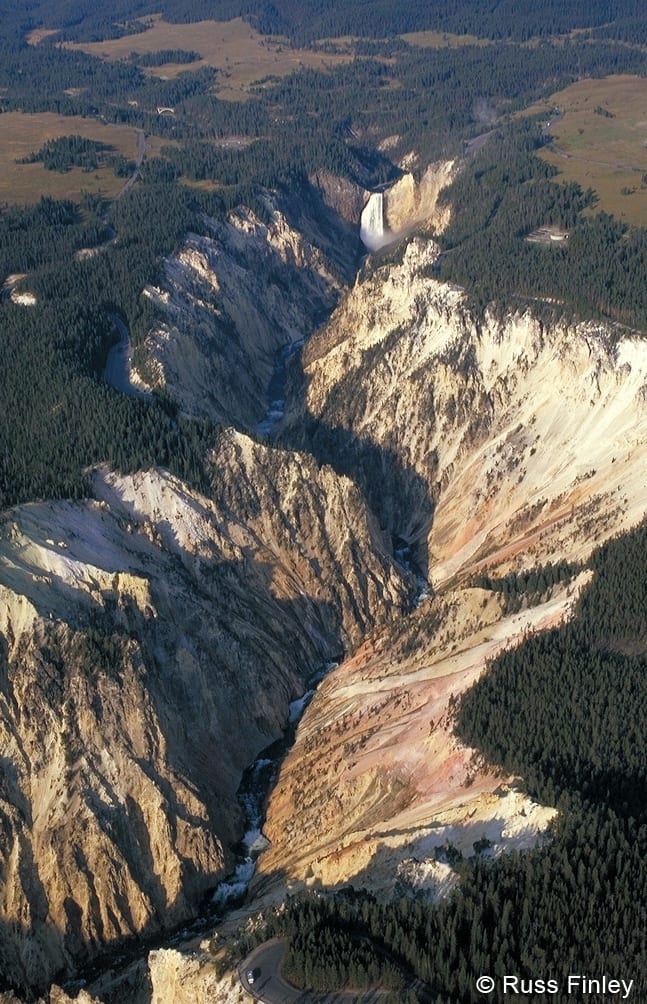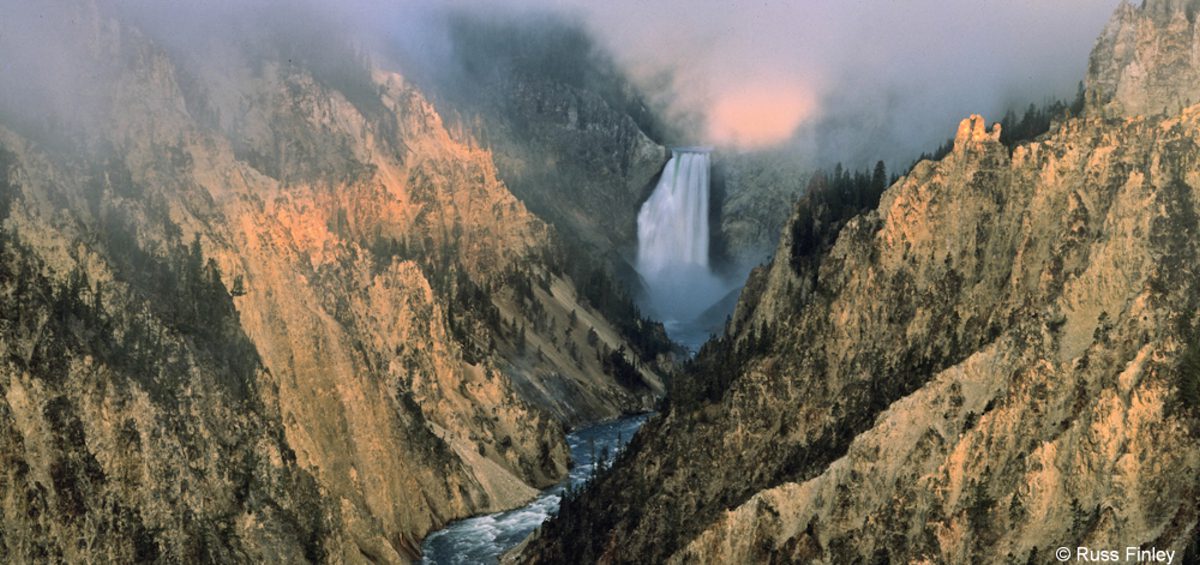The Grand Canyon of the Yellowstone
The canyon below the Lower Falls was at one time the site of a geyser basin that was the result of rhyolite lava flows, extensive faulting, and heat beneath the surface (related to the hot spot). No one is sure exactly when the geyser basin was formed in the area, although it was probably present at the time of the last glaciation. The chemical and heat action of the geyser basin caused the rhyolite rock to become hydrothermally altered, making it very soft and brittle and more easily erodible (sometimes likened to baking a potato). Evidence of this thermal activity still exists in the canyon in the form of geysers and hot springs that are still active and visible. The Clear Lake area (Clear Lake is fed by hot springs) south of the canyon is probably also a remnant of this activity.

According to Ken Pierce, U.S. Geological Survey geologist, at the end of the last glacial period, about 14,000 to 18,000 years ago, ice dams formed at the mouth of Yellowstone Lake. When the ice dams melted, a great volume of water was released downstream causing massive flash floods and immediate and catastrophic erosion of the present-day canyon. These flash floods probably happened more than once. The canyon is a classic V-shaped valley, indicative of river-type erosion rather than glaciation. The canyon is still being eroded by the Yellowstone River.
The colors in the canyon are also a result of hydrothermal alteration. The rhyolite in the canyon contains a variety of different iron compounds. When the old geyser basin was active, the “cooking” of the rock caused chemical alterations in these iron compounds. Exposure to the elements caused the rocks to change colors. The rocks are, in effect, oxidizing; the canyon is rusting. The colors indicate the presence or absence of water in the individual iron compounds. Most of the yellows in the canyon are the result of iron present in the rock rather than sulfur, as many people think.
